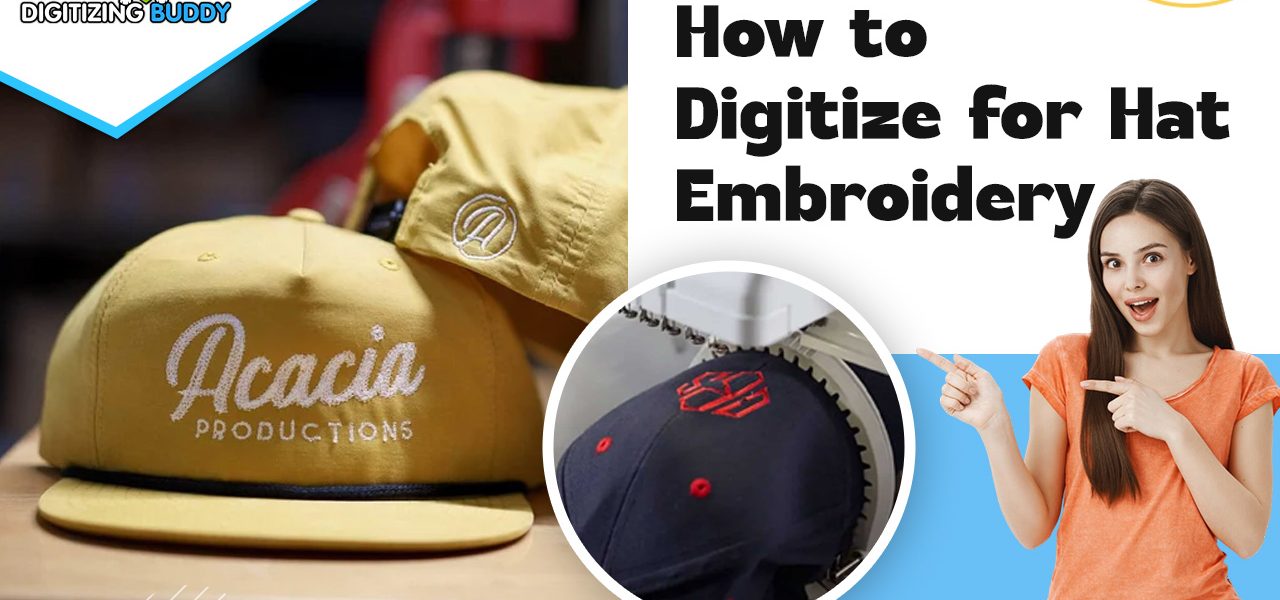Digitizing for hat embroidery is an art that requires a blend of creativity and technical skill. Unlike flat surfaces, hats present unique challenges due to their curved nature. Proper digitization ensures that your designs come out crisp and professional on any type of hat. Whether you’re new to embroidery or looking to refine your skills, understanding the process of embroidery digitizing on hat is essential.
Understanding the Basics of Embroidery Digitizing
What is Embroidery Digitizing?
Embroidery digitizing is the process of converting artwork into a digital file that an embroidery machine can read. This involves using specialized software to map out each stitch, determining the path the needle will take, and ensuring the design translates well onto fabric.
Why is Digitizing Important for Hats?
Hats are typically made of materials that can be challenging to embroider on due to their shape and structure. Proper digitizing accounts for the curvature and fabric type, ensuring that the design remains consistent and high-quality. Without good digitizing, the design can become distorted or misaligned.
Tools You Need for Digitizing
To start digitizing for hats, you’ll need embroidery software that allows you to create and edit embroidery files. Popular options include Wilcom, Hatch, and Brother PE-Design. Additionally, a good understanding of your embroidery machine’s capabilities is essential.
Choosing the Right Design for Hats
Design Considerations
When choosing a design for hat embroidery, it’s important to consider the size and complexity. Simple, bold designs work best on hats because they stand out more and are easier to digitize. Intricate details can get lost on the curved surface of a hat.
Size and Placement
The design should be appropriately sized for the hat. Generally, the maximum height for designs on the front of a cap is around 2.25 inches. Placement is also crucial; the design should be centered and positioned correctly to align with the hat’s structure.
Color and Contrast
Choosing the right colors is vital for visibility. High contrast between the design and the hat material ensures that the embroidery stands out. Avoid using colors that blend too closely with the hat’s color.
Step-by-Step Guide to Digitizing for Hat Embroidery
Preparing Your Artwork
Start by preparing your artwork in a vector format if possible. Vector files are easier to manipulate and scale without losing quality. If your artwork is in a raster format, use graphic design software to convert it to a vector file.
Setting Up Your Embroidery Software
Open your embroidery software and import your design. Set the canvas size to match the hat’s embroidery area. Most software has templates or guides for common hat styles, which can help you visualize the placement and size of your design.
Mapping Out Stitches
Begin mapping out the stitches for your design. Use underlay stitches to stabilize the fabric and provide a solid foundation for the top stitches. For hats, a center-out and bottom-up stitch direction works best to minimize fabric distortion.
Adjusting for Hat Structure
Handling the Curve
Hats have a natural curve that can distort embroidery designs. Adjust your stitch angles to account for this curvature. Using a curved surface template in your software can help you visualize how the design will appear on the hat.
Stabilizing the Hat
Use appropriate stabilizers to keep the hat stable during embroidery. Tear-away or cut-away stabilizers are commonly used. For structured hats, additional support may be needed to maintain shape.
Hooping Techniques
Hooping a hat correctly is crucial for successful embroidery. Use a hat hoop or cap frame designed for your machine. Ensure the hat is taut and centered in the hoop, with the brim out of the way of the embroidery area.
Testing and Tweaking Your Design
Running a Test Stitch
Before embroidering on the actual hat, run a test stitch on a similar fabric. This allows you to check for any issues with the design, such as puckering, distortion, or alignment problems.
Making Necessary Adjustments
Based on the test stitch, make any necessary adjustments in the digitizing software. This might include changing stitch density, adjusting underlay, or modifying stitch direction.
Finalizing the Design
Once you’re satisfied with the test stitch, finalize your design file. Save it in the appropriate format for your embroidery machine.
Common Mistakes to Avoid
Overcomplicating Designs
Avoid overly complex designs with too many details or colors. Simplify your artwork to ensure clarity and reduce the risk of errors during embroidery.
Incorrect Hoop Placement
Ensure the hat is properly hooped. Misaligned or loosely hooped hats can cause shifting during embroidery, leading to distorted designs.
Neglecting Stabilizers
Using the wrong type or insufficient amount of stabilizer can result in poor quality embroidery. Always match the stabilizer type to your hat’s material and the design’s complexity.
Advanced Techniques for Hat Embroidery
3D Puff Embroidery
3D puff embroidery adds a raised, textured effect to your designs. This technique involves placing foam under the stitches, creating a three-dimensional look. It’s particularly popular for logos and text on hats.
Appliqué on Hats
Appliqué involves stitching fabric pieces onto the hat to create designs. This technique can add a unique, textured element to your embroidery and is a great way to incorporate multiple colors and patterns.
Combining Techniques
Combining different embroidery techniques, such as 3D puff and appliqué, can create stunning and unique designs. Experiment with layering techniques to add depth and interest to your embroidery.
Choosing the Best Embroidery Machine for Hats
Features to Look For
When selecting an embroidery machine for hats, look for features like a cap frame, adjustable hoop sizes, and a variety of stitch options. A machine with a large embroidery area and high stitch speed can save time and increase productivity.
Top Recommended Machines
Popular machines for hat embroidery include the Brother PR1055X, Janome MB-7, and the Melco Bravo. Each of these machines offers advanced features and reliable performance for professional-quality embroidery.
Maintenance and Care
Regular maintenance of your embroidery machine is essential for consistent results. Clean your machine regularly, replace needles as needed, and follow the manufacturer’s maintenance schedule to keep your machine in top condition.
Conclusion
Digitizing for hat embroidery requires careful planning and execution. By understanding the unique challenges of hat embroidery and following best practices, you can create high-quality, professional designs. Whether you’re new to embroidery or looking to improve your skills, mastering the art of embroidery digitizing by Digitizing Buddy opens up a world of creative possibilities. Practice, patience, and the right tools are key to achieving stunning embroidered hats that stand out.




